TVD Second Patriotic. 1915 year. Part of 1
For Germany and Austria-Hungary, the failure of the strategic planning of A. von Schlieffen and F. Conrad von Gettsendorf was a fait accompli. By the beginning of the 1915 campaign, a steady-state positional war in Europe did not allow a quick solution to be reached on the Western Front. At the same time, on the Eastern front, the stretching of the Russian troops and the considerable length of the front provided the Austro-German command with considerable freedom of maneuver. And the main blow in the campaign of Austro-Germans inflicted on Russia.
The enemy sought: 1) to weaken the Russian army as much as possible (by defeating its main forces and throwing back to the east, it was possible to free some of the forces to fight on the French front); 2) to save Austria-Hungary - the Russians on the threshold of the Hungarian plain (after the Battle of Galicia, the Austrian army’s combat effectiveness was seriously undermined, which led to an increase in the load on Germany - German troops had to be used as “supports”); 3) victories in the east - an important trump card in the struggle for possible allies.
In total, on the Eastern front at the start of 1915, the 99 of the Russian divisions were opposed by the Austro-German 83 (the German 41 and the Austrian 42). But the shortage of Russian armies in men was 500 thousand people, and already during this period there were more than 200 thousand thousand artillery shells lacking. [1].
The Russian command also planned active operations. The goal was the gradual squeezing of German troops from East Prussia and the overcoming of the Carpathians - with access to the Hungarian plain. If the first of these operations was only to improve the position of the troops in the East Prussian theater of operations, then the second was strategic in nature and, if successful, could lead to the withdrawal of the war from Austria-Hungary. But these attacks were carried out on the flanks of the strategic formation and in divergent directions. If for 1914 a similar operational-strategic creativity (simultaneous strikes against Austria-Hungary and Germany) was justified by all-union and Russian interests, in 1915 it was unreasonable - the transition to defense on the German front was dictated by necessity. The “supply crisis” of ammunition also appeared. Accordingly, the dispersion of forces and available funds for several operations could not lead to success. To some extent, the offensive on the flanks of the Eastern Front can be explained by the need to secure the flanks of the Advanced Theater — the Polish ledge or “balcony. Austro-Germans called such planning Russian "giant offensive plan" [2].
In order to parry the actions of the Russian fronts and at the same time try to encircle the central grouping of the Russian army in action, concentrated in the "Polish ledge" [3] command of the enemy began to implement the "Strategic Winter Cannes". And struck powerful blows - also on the flanks of the Eastern Front. The first was applied in East Prussia by the German 10 and 8 armies, which were significantly superior in the forces and means of the opponent - the troops of the Russian 10 army. In the course of the Second August Operation (the Winter Battle in Masuria), the latter was defeated - the Germans dropped it, surrounding one corps. The situation was stabilized thanks to the actions of the Russian 1 and (especially) 12 armies - in the Second Prasnysh operation they defeated the German 8 and 12 armies.
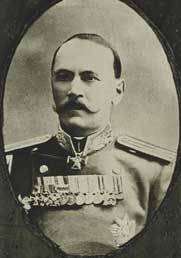
Commander 10 A NWF General of Infantry FV Sievers
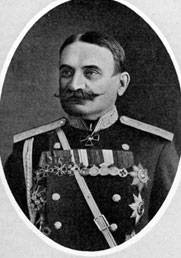
Commander 12 A of the NWF cavalry general P. A. Plehve
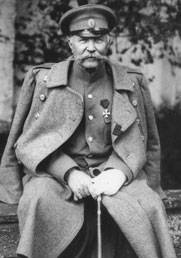
Commander 1 A of the NWF cavalry general A. I. Litvinov
The second blow is in the Carpathians. The Austrian troops were significantly strengthened by the German contingents - by moving to action, in a series of oncoming battles and battles, they managed to largely extinguish the offensive potential of the South-Western Front. The Carpathians were forced by the Russian troops, but, due to exhaustion of forces, the front went on the defensive.
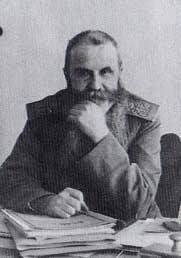
Commander-in-Chief of the armies of the South-Western Front, General of Artillery N. I. Ivanov
The failed "Winter Strategic Cannes" prompted the command of the German bloc to search for new forms of operational and strategic solutions on the Eastern Front - now in the difficult situation of the successes of the Russian troops in both the northwestern and the southwestern strategic directions -Hungary: Russians, by the spring of 1915, seized mountain passes in the Carpathians, preparing to enter the Hungarian Plain). Italy to the Entente, as well as Romania (although the latter so far led a dual policy). Taking into account the deplorable situation of the Austrian troops, the German units became the “locomotive” of the new strategic operation, and the Austro-Hungarians performed auxiliary tasks.
Thus was born the idea of an offensive Gorlitsk strategic operation. Having realized the Gorlitsky breakthrough, the Austro-Germans tried to develop it with the help of a series of operations - and the Russian troops retreated, counterattacking and leading heavy defensive battles.
Having again decided to encircle the Russian group in Poland, the enemy struck in the south and north of the “Polish bulge” - implementing “Summer Strategic Cannes”. This led to the Narev and Third Prasnysh and Krasnostava, Hrubieszow and Lublin-Kholmsk operations on the northern and southern flanks of the "protrusion", respectively. Russian troops managed to get out of the strike, recreating the front on new frontiers.
Special place during the 1915 campaign had operations on the Prut and Dniester - the Khotinsky, Zadnistrovskaya, Prutskaya and Zhuravlenskaya. They were among the most successful for the Russian army in this campaign. The left-flank armies of the South-Western Front tried to distract the enemy’s attention with vigorous actions.
In the summer - autumn, the Russian troops carried out a number of defensive-offensive operations carried out in order to stabilize the front. The operations of this series include the Mitavo-Shavelskaya and Vilna operations in the Baltics, the Lutsk, Chartori operations, the battles on Stryp and Seryet in the Galician theater of war.
During the 1915 campaign, the Baltic and Transdniestrian theaters appeared, while the East Prussian and Polish theaters were lost.
In the Second August operation [4] The main task of the Russian 10 Army was to maintain the strategic position taken during the successful 1914 autumn offensive - and maintain the East Prussian bridgehead until the fresh 12 Army was concentrated. Then a prospective offensive was planned on Willenberg - Neidenburg - Soldau.
1 schema. East Prussian theater of war at the beginning of 1915, Belolipetsky V.E. Fighting infantry regiment in the forests of Augustus. 1915 year. M., 1940
The Germans were counting on serious strategic success, destroying the Russian 10 Army through its deep flank coverage. To achieve the goal, they used their strategic reserve - 6 divisions, so-called. "Young" buildings (38-th, 39-th and 40-th). Moreover, the French front was once again weakened - the 2 divisions of the 21 Army Corps, which had proven itself in France, were transferred to East Prussia. E. von Falkenhayn noted the transfer of these divisions "with a pain in the heart" - because the use of a single general reserve in the east marked a further refusal, and for a long time, from large-scale active operations in the west [5].
3 of the German corps, rejecting the right-flank corps of the Russian 10 army (3 army), went to her flank and rear. The lack of an army reserve for the Russian army had the most negative consequences for the results of this operation. Having made the right decision to withdraw the army from the blow, the Russian army command was unable to quickly and effectively implement the appropriate maneuver. In a wooded winter setting, the connection between the units was broken - and the 20 Army Corps received a withdrawal order when the main forces of the army retreated. At the same time, the enemy, thanks to the capture of lagging soldiers, as well as intercepting orders and reports by radio, knew the disposition of the Russian corps well.
As a result, the 20 corps was surrounded by three-fold superior enemy forces. For a week, the corps fought in encirclement, holding down the enemy and absorbing the impact energy of the entire strike group of the Germans - thanks in large part to its resilience, the enemy’s attempt to surround the entire 10 army failed. Although the Russians won a number of tactical victories in this operation, the initiative was pulled out of the hands of the Russian command, and the actions of the North-Western Front were reduced to repelling the blows that the Germans systematically inflicted. [6].
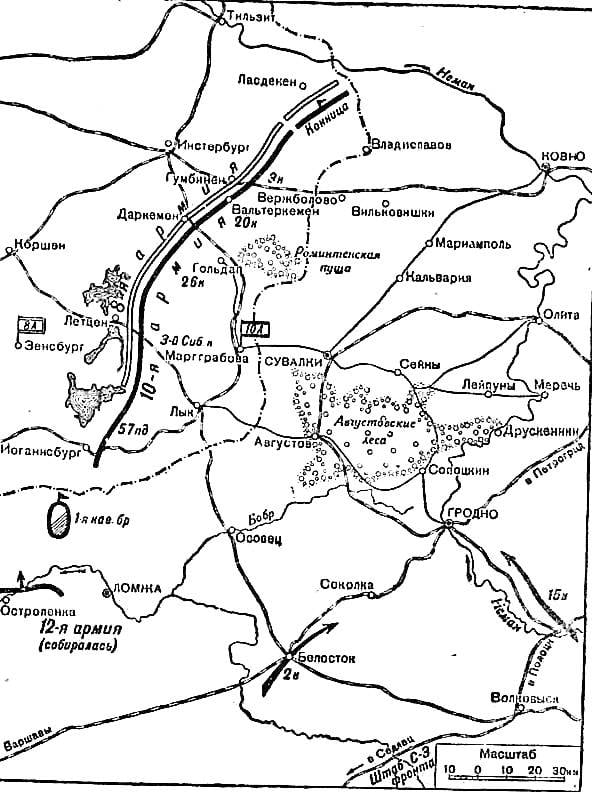
2 schema. Position of the Russian 10 Army in East Prussia at the beginning of February 1915, Belolipetsky, V. E. Decree. cit.
But, despite the twofold superiority in forces, the Germans failed to destroy the Russian army. The offensive of the German 10 and 8 armies was stopped, they were pretty battered. The strategic reserve of Germany was inefficiently wasted in the August forests, and the implementation of the "Winter Strategic Cannes" in the north-west direction was disrupted. According to E. Falkengine, the German forces reached the limits of their combat capability and could not overcome the pressure quickly and skillfully abandoned reserves. [7].
Losses in this operation amounted to 20000 people for the German 8 and 10 armies (only the 21 army corps lost to 6000 people). The Russian 10 army lost the 56000 man, but was not destroyed - moreover, it later launched a counter-offensive. The 20 Army Corps suffered the most, having taken the brunt of the German corps of the shock group - from the 46000 man, by the beginning of the fighting he had lost 34000. Russians lost 185 guns [8].
The German command was able to oust the Russian troops from East Prussia, which they occupied on one scale or another for 7 months. This allowed the Germans to create a bridgehead for the invasion of the Baltic States, as well as to provide operations on the northern flank of the "Polish balcony". Russian troops lost the opportunity to directly influence the territory of the key power of the German bloc. Only 2 of the first month of the 1915 campaign, the Russians controlled the East Prussian theater, the key to the north-western strategic direction, and its loss had a negative effect on the situation on the Polish theater and led to the formation of the Baltic theater.
The central theater of operations, around which the main events of the 1915 campaign unfolded, were key enemy operations aimed at mastering the “Polish balcony” with the prospect of destroying the Russian armies in it. Given that about half of the Russian army in the army was concentrated in the Polish ledge, it becomes clear the importance of the struggle for this theater of operations - especially for its flanks.
Initially, the German troops in the Polish theater of war attempted to "push through" the defense of the Russian troops during the offensive from Borzhimov and Volya Shidlovskaya. The beginning of the German offensive [9] It was regarded by the command of the Russian 2 Army and the North-Western Front as another attempt to break through the enemy to Warsaw.
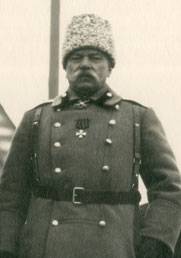
Commander 2 A NWF General of Infantry V. V. Smirnov
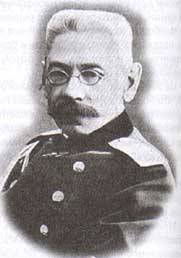
Commander-in-Chief of the armies of the North-Western Front, General of Infantry N. V. Ruzsky
3 schema. Positions of the German 9 Army in operation at the Will of Shidlovskaya. The figure 2 marked the front of its enemy - the Russian 2-th army. Reichsarchiv. Der Weltkrieg 1914 – 1918. B. 7. Berlin, 1931
Accordingly, they tried to do everything to prevent this - a strong group was created (up to 11 corps) headed by the commander of the 6 Army Corps V.I. Gurko, tightened reserves of the front.
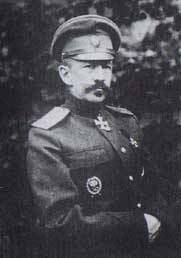
Army Group Commander in Operation Volya Shidlovskaya Lieutenant General V.I. Gurko
The unprepared operation, consisting of intermittent counterattacks of the opponents, ended in nothing, and the Russian troops suffered heavy losses. Gurko 18 Group - January 23 Lost to 40000 People [10]. The Germans also estimated their losses in 40000 people in the 8 divisions, and only during the 3 day of the fighting (the 4-i and 36-i infantry, 1-i and 49-i reserve divisions suffered the most) [11]. That is, the losses amounted to 50% of the shock group.
During this operation, attention was diverted from the upcoming responsible offensive operation in East Prussia. Moreover, the German command not only distracted attention from the impending strike in East Prussia, but also exhausted the reserves of the North-Western Front on its eve.
In the autumn — in the winter of 1914, Poland — the central theater of the Eastern Front, both in scale and decisiveness of operations, and in terms of the troops involved, in 1915, the stabilization of this front and the depletion of enemy troops led to the search for enemy command. The Russian command did not see that Poland was turning into a secondary theater of operations, and the January 1915 operations at Volya Shydlouskaya and Bolimov were just grandiose demonstrations to divert Russian forces and attention from flank theaters, where the Austro-German command planned large-scale decisive operations during "Winter Strategic Cannes".
Notes.
1. Strategic outline of the war 1914-1918. Part 3, pp. 36–37.
2. Hoffman M. The war of missed opportunities. C. 66.
3. Privislinsky district. Due to the fact that it went deep into the territory of the powers of the German bloc, it was called the Advanced Theater (i.e. TVD), “Polish ledge”, “Polish balcony”.
4. Second August operation 25 January - 13 February - between 10 A SZF (gen. from infant. FV Sivers; 11,5 infantry and 2 caval. div. - to 126000 bayonets, 516 op.) and German 8 A (general infantry O. von Belov) and 10 A (the general. Infantry G. von Eichgorn) - 15 infantry., 2,5 caval. div - up to 250000 bayonets, up to 1200 op.). See: Reichsarchiv. Der Weltkrieg 1914 – 1918. B. 7. Berlin, 1931; Kamensky MP. Death of 20 8-21 February 1915 housing. According to archival materials ..; A. Kolenkovsky. Winter operation in East Prussia in 1915; Belolipetsky V. Ye. Infantry regiment fighting in the August forests; Holmsen, I. A. World War. Our operations on the East Prussian front in winter 1915
5. Falkenhayn E. Decree. op. S. 62.
6. Budberg A.P. From the memoirs of the war of 1914-1917. Third East Prussian catastrophe 25. 01. - 08. 02. 1915. P. 49.
7. Falkenhayn E. Decree. op. S. 64.
8. Holmsen I. A. Decree. op. S. 298.
9. Operation at Will Shidlovskaya - defensive and offensive operation 2 A NWF (gen. From infantry. V.V. Smirnov; 15 infantry and 2 cavalry div .; up to 200000 bayonets, up to 800 hor.) Versus 9 A (gen.-regiment A. von Mackensen; 17,5 infantry., 4 cavalry divisions; over 200000 bayonets, 1200 units.) of the German Eastern Front 18. - 24. 01. 1915. See: Russian State Militaryhistorical archive (RGVIA). F. 2190. Op. 1. D. 53 .; Reichsarchiv. Der Weltkrieg 1914-1918. AT 7.
10. RGVIA. F. 2190. Op. 1. D. 53. L. 25.
11. Reichsarchiv. Der Weltkrieg 1914 – 1918. B. 7. S. 167.
Artillery battery on the campaign. GASO (State Archive of the Saratov Region)
To be continued
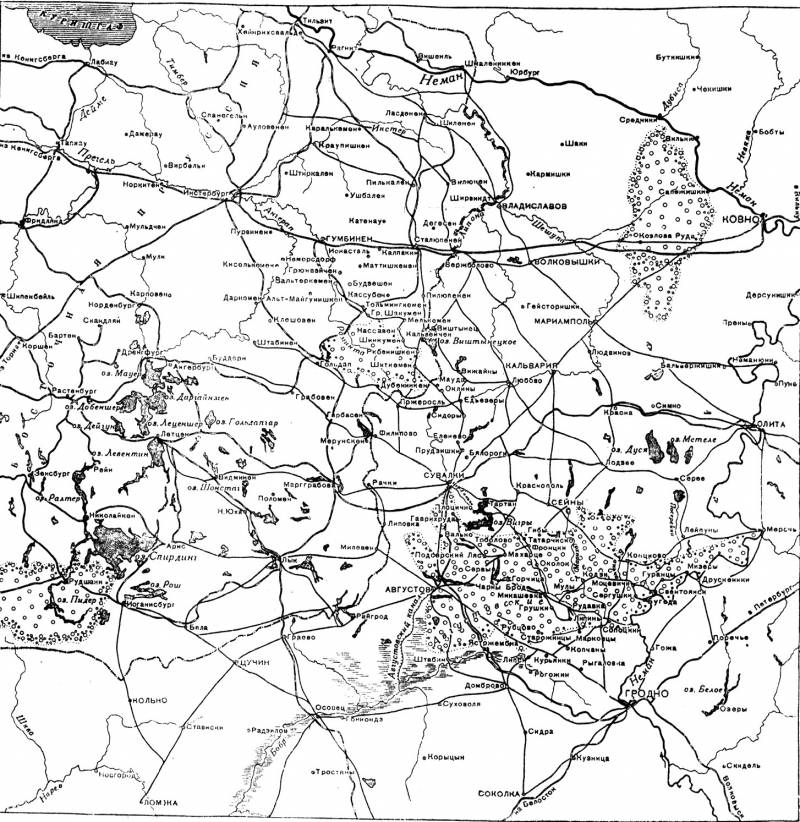
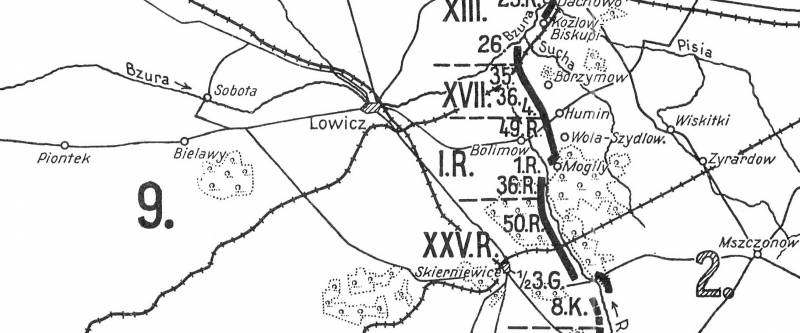
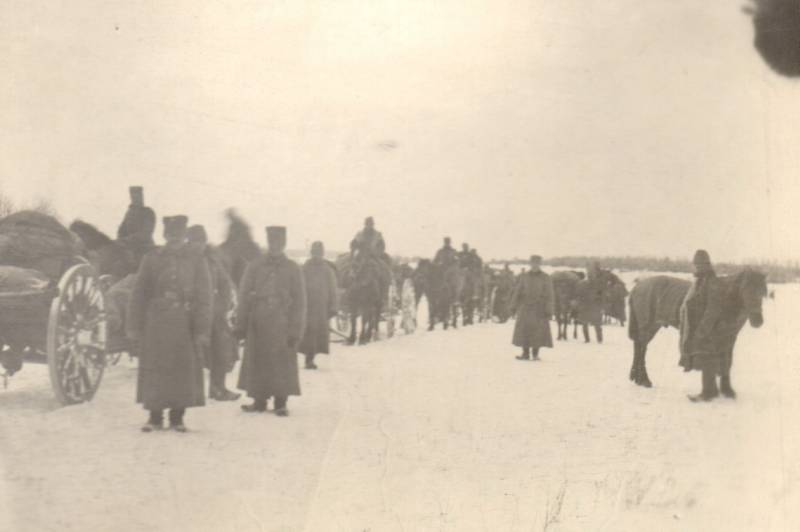
Information